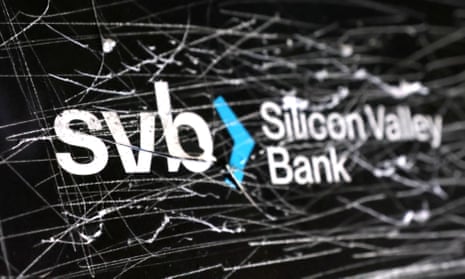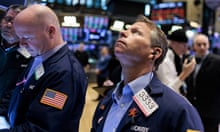The world’s most powerful central banks may stop raising interest rates after the Silicon Valley Bank crisis, economists have said, amid growing signs of financial stress linked to rapid increases in borrowing costs over the past year.
Analysts said the US Federal Reserve would probably leave interest rates on hold at its decision next week, as the meltdown at the California-based technology lender rippled through global financial markets.
Against a backdrop of concern over contagion spreading through the wider global banking industry, financial market expectations for significant further rate increases from the Bank of England and the European Central Bank also eased on Monday.
Goldman Sachs said the Fed would probably keep rates on hold at the current level of 4.5% to 4.75%, after previously expecting another rise.
“In light of the stress in the banking system, we no longer expect the FOMC [federal open markets committee] to deliver a rate hike at its next meeting on 22 March (v our previous expectation of a 25 basis point hike),” analysts at the bank wrote in a note to clients.
It said the US central bank would probably raise rates by 0.25 percentage points in May, June and July as it sought to counter high levels of inflation, before a peak in rates of 5.25% to 5.5%. “Though we see considerable uncertainty about the path,” they added.
Analysts at financial services group Nomura went as far as to predict that the Fed would cut rates at its meeting next week.
“We expect a 25 basis point rate cut and a halt of balance sheet reduction in March, while a new lending facility is possible,” they wrote in a newsletter.
As recently as last week, before the failure of SVB, a rate increase of 0.5 percentage points had been expected in financial markets, after the Fed chair, Jerome Powell, warned that more increases would be required to cool inflation.
The Bank of England had been given an almost 100% probability by traders in financial markets of raising rates by 0.25 percentage points at its next meeting on 23 March. However, that has since fallen to a 71% chance as City traders assess the consequences of SVB’s failure.
Economists said financial stability concerns after SVB’s collapse would probably force banks to act more cautiously when issuing loans – in effect doing some of the same job as higher borrowing costs. However, they also said SVB’s failure showed delayed impacts from the most aggressive rate-rising cycle in decades were feeding through.
“The Fed is starting to break things,” said John Briggs, the global head of economics and markets strategy at NatWest. He said he expected the Fed to lean towards a 25 basis point rise rather than 50 basis points that was previously expected.
after newsletter promotion
“If tightening to date is starting to break things, then the Fed may not want to pile on more,” Briggs said.
SVB’s collapse came after the bank invested heavily in US government bonds two years ago, at a time when it had healthy deposit levels concentrated in the tech sector and among venture capital investors. With a fall in US government bond prices as the Fed raised interest rates, the value of its investments dropped. It also faced rising demands to return cash to depositors as the tech sector came under pressure.
On Monday morning it was announced that HSBC would buy SVB’s UK operations for £1, after a weekend of emergency talks between the UK government, the Bank of England and potential suitors.
“They were super exposed to tech venture capital depositors who had been seeing cash burn as the tech bubble burst, while previously having loaded up their balance sheet with positive carry trades into bonds when deposits soared during the tech boom and ultra low rate environment circa 2021,” analysts at Deutsche Bank wrote in a note to clients.
Suggesting that “something always, always breaks when the Fed hikes”, they said three factors had hit the bank: tech companies requirements for cash, higher deposit rates on offer than SVB could provide elsewhere as interest rates rose, and finally “fear” over the stability of SVB after it sold about $21bn (£17bn) of its bond portfolio for a steep loss last week. “Ultimately we saw an irreversible bank run.”










